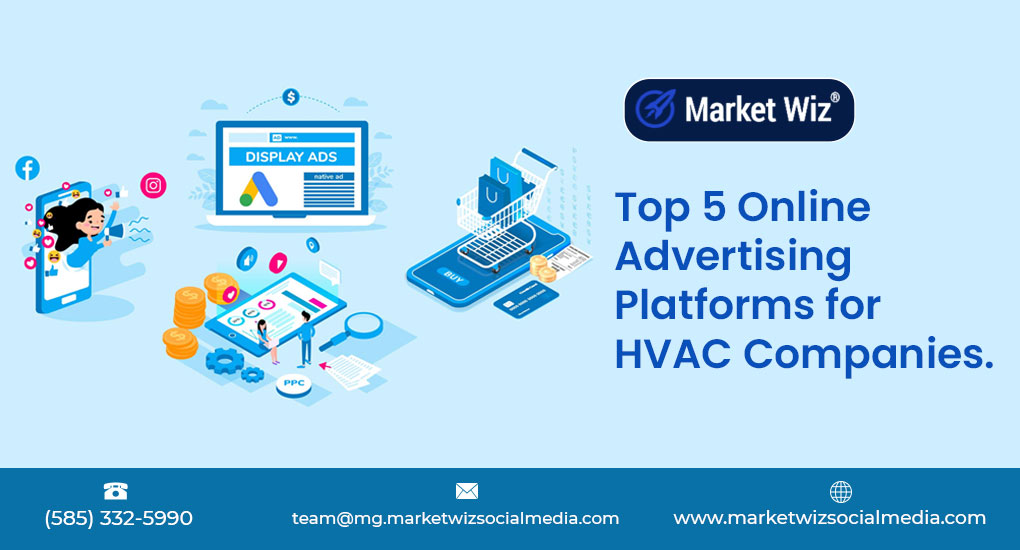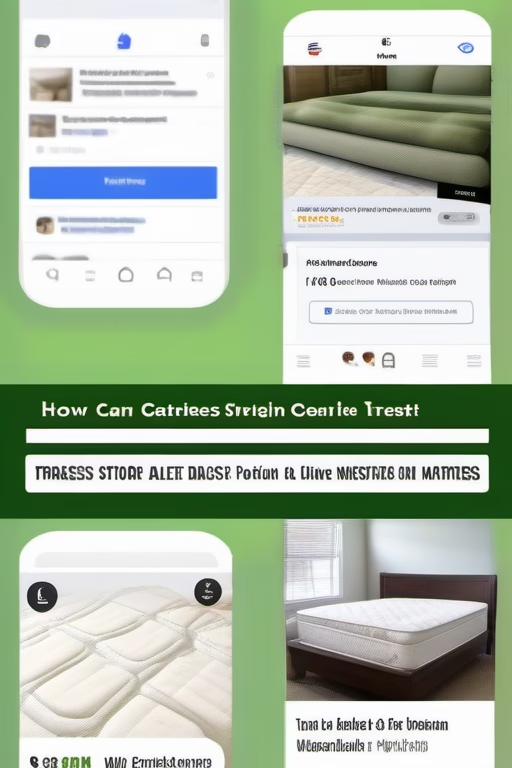How to Market Shipping Containers for Storage and Living Spaces
Shipping containers have become increasingly popular as versatile solutions for both storage and living spaces. Their durability, modularity, and cost-effectiveness make them an attractive option for businesses and individuals alike. However, successfully marketing shipping containers requires a strategic approach that highlights their benefits, reaches the right audience, and leverages the latest digital marketing techniques.
This comprehensive guide explores effective strategies to market shipping containers for storage and living spaces, providing insights into best practices, digital marketing techniques, and the platforms that can help you maximize your container sales.
Table of Contents
- Introduction
- 1. Understanding Shipping Containers
- 1.1 Types of Shipping Containers
- 1.2 Benefits of Using Shipping Containers
- 1.3 The Shipping Container Market
- 2. Marketing Strategies for Shipping Containers
- 2.1 Digital Marketing
- 2.2 Content Marketing
- 2.3 Social Media Marketing
- 2.4 Search Engine Optimization (SEO)
- 2.5 Email Marketing
- 2.6 Pay-Per-Click Advertising (PPC)
- 2.7 Influencer Marketing
- 2.8 Video Marketing
- 2.9 Webinars and Live Streams
- 2.10 Affiliate Marketing
- 3. Identifying Your Target Audience
- 4. Platforms for Marketing Shipping Containers
- 4.1 Website and Blog
- 4.2 Social Media Platforms
- 4.3 Online Marketplaces
- 4.4 Industry-Specific Platforms
- 4.5 Email Marketing Tools
- 4.6 Search Engine Marketing Tools
- 4.7 Customer Relationship Management (CRM) Systems
- 4.8 Analytics and Data Tools
- 4.9 Advertising Networks
- 4.10 Affiliate Networks
- 5. Measuring Success and ROI
- 6. Conclusion
- 7. Frequently Asked Questions (FAQ)
- 8. 25 Relevant Keywords
1. Understanding Shipping Containers
Shipping containers, also known as intermodal containers, are large standardized steel boxes used primarily for transporting goods via ships, trucks, and trains. Their robust construction and standardized dimensions make them versatile for various applications beyond shipping, including storage and living spaces.
1.1 Types of Shipping Containers
Shipping containers come in various sizes and types, each designed for specific purposes. Understanding the different types is essential for marketing them effectively.
- Standard Containers: Typically available in 20 or 40 feet in length, these are the most common types used for general cargo.
- High Cube Containers: Similar to standard containers but with an additional foot in height, providing more vertical space.
- Refrigerated Containers (Reefers): Equipped with refrigeration units, these are used for transporting perishable goods.
- Open-Top Containers: Have a removable tarpaulin roof, allowing for the loading of oversized cargo.
- Flat Rack Containers: Feature collapsible sides, making them suitable for transporting bulky or irregularly shaped items.
- Ventilated Containers: Designed with ventilation openings, ideal for goods that require airflow.
- Tank Containers: Built to transport liquids and gases, these containers are cylindrical in shape.
- Modified Containers: Customized containers with additional features or alterations for specific uses, such as homes, offices, or pop-up shops.
1.2 Benefits of Using Shipping Containers
Shipping containers offer numerous advantages that make them ideal for storage and living spaces:
- Durability: Built to withstand harsh maritime conditions, containers are robust and long-lasting.
- Modularity: Their standardized sizes allow for easy stacking and combining, providing flexibility in design and construction.
- Cost-Effective: Compared to traditional construction, containers can be a more affordable option, especially for temporary or modular structures.
- Eco-Friendly: Repurposing containers promotes sustainability by reducing waste and utilizing existing materials.
- Quick Installation: Prefabricated containers can be quickly transformed into functional spaces, reducing construction time.
- Scalability: Easily scalable to meet growing needs by adding more containers as required.
- Customization: Containers can be customized with windows, doors, insulation, and interior fittings to suit specific requirements.
- Security: Their strong metal structure provides enhanced security against theft and damage.
1.3 The Shipping Container Market
The market for shipping containers has expanded significantly in recent years, driven by the growing demand for sustainable and affordable housing solutions, innovative commercial spaces, and storage solutions. Key factors contributing to the market growth include:
- Urbanization: Increasing urban populations have created a demand for compact and efficient living and working spaces.
- Sustainability: The push for eco-friendly construction methods has boosted the popularity of repurposed shipping containers.
- Cost Efficiency: Shipping containers offer a cost-effective alternative to traditional construction, appealing to budget-conscious buyers.
- Innovation: Advances in design and technology have enabled the transformation of containers into aesthetically pleasing and functional spaces.
- Versatility: The wide range of applications, from homes and offices to retail spaces and event venues, has broadened the market base.
- Global Trade: The growth of global trade has increased the availability and variety of shipping containers, providing ample supply for repurposing.
As the market continues to evolve, business owners must stay informed about the latest trends, platform updates, and consumer preferences to effectively market and sell shipping containers online.
2. Marketing Strategies for Shipping Containers
Effective marketing strategies are essential to reach your target audience, highlight the benefits of shipping containers, and differentiate your offerings from competitors. Below are comprehensive strategies to market shipping containers for storage and living spaces.
2.1 Digital Marketing
Digital marketing encompasses all online efforts to promote your shipping containers. It includes various tactics such as search engine optimization (SEO), pay-per-click (PPC) advertising, social media marketing, and email marketing.
- SEO: Optimize your website and content with relevant keywords to improve your search engine rankings and attract organic traffic.
- PPC Advertising: Use platforms like Google Ads and Bing Ads to run targeted ad campaigns, driving immediate traffic to your listings.
- Social Media Marketing: Leverage platforms like Facebook, Instagram, and LinkedIn to engage with your audience, share content, and promote your shipping containers.
- Email Marketing: Build an email list of potential and existing customers to send newsletters, promotions, and updates about your shipping containers.
- Content Marketing: Create valuable content such as blog posts, guides, and videos that educate your audience about the benefits and uses of shipping containers.
2.2 Content Marketing
Content marketing involves creating and sharing valuable content to attract and engage your target audience. For shipping containers, this can include:
- Blog Posts: Write articles about the benefits of using shipping containers for storage and living spaces, design ideas, and maintenance tips.
- Guides and E-books: Develop comprehensive guides that help customers understand how to choose, customize, and maintain shipping containers.
- Videos: Create video tours of your shipping containers, customer testimonials, and DIY customization projects.
- Infographics: Design infographics that highlight key statistics, benefits, and uses of shipping containers.
- Case Studies: Showcase successful projects where shipping containers have been transformed into functional spaces, providing real-world examples of their versatility.
2.4 Search Engine Optimization (SEO)
SEO is crucial for increasing the visibility of your website and listings on search engines like Google. Key SEO strategies include:
- Keyword Research: Identify and target keywords that potential customers use when searching for shipping containers for storage and living spaces.
- On-Page SEO: Optimize your website’s content, meta tags, headings, and images with relevant keywords to improve search engine rankings.
- Technical SEO: Ensure your website is mobile-friendly, has fast loading times, and is secure (HTTPS) to enhance user experience and search rankings.
- Backlink Building: Acquire high-quality backlinks from reputable websites to boost your domain authority and search engine rankings.
- Local SEO: Optimize your website for local searches by including location-based keywords and creating a Google My Business profile.
2.5 Email Marketing
Email marketing is an effective way to nurture leads, engage with customers, and drive sales. Implementing successful email marketing campaigns involves:
- Building an Email List: Collect email addresses through website sign-ups, content downloads, and customer interactions.
- Segmenting Your Audience: Divide your email list into segments based on factors like interests, purchase history, and demographics to send targeted messages.
- Creating Engaging Content: Develop compelling email content that includes promotions, new product launches, informative articles, and personalized recommendations.
- Automated Campaigns: Use email automation tools to send timely and relevant messages, such as welcome emails, follow-ups, and abandoned cart reminders.
- Analyzing Performance: Track email metrics like open rates, click-through rates, and conversions to assess the effectiveness of your campaigns and make data-driven improvements.
2.6 Pay-Per-Click Advertising (PPC)
PPC advertising allows you to run targeted ads on search engines and other platforms, paying only when someone clicks on your ad. Key aspects of PPC marketing include:
- Google Ads: Create search and display ads targeting keywords related to shipping containers for storage and living spaces.
- Facebook Ads: Utilize Facebook’s targeting options to reach specific demographics and interests relevant to your shipping containers.
- Budget Management: Set daily or monthly budgets to control your ad spend and optimize your campaigns for cost-effectiveness.
- Ad Copy and Creatives: Develop compelling ad copy and visuals that highlight the unique benefits and features of your shipping containers.
- Landing Pages: Direct ad traffic to optimized landing pages that are designed to convert visitors into leads or customers.
2.7 Influencer Marketing
Partnering with influencers can help you reach a wider audience and build credibility for your shipping containers. Effective influencer marketing strategies include:
- Identifying Relevant Influencers: Choose influencers who align with your brand values and have an audience interested in storage solutions, sustainable living, or construction.
- Collaborating on Content: Work with influencers to create authentic content, such as reviews, tours, and testimonials of your shipping containers.
- Sponsored Posts: Pay influencers to promote your shipping containers through sponsored posts on their social media channels.
- Affiliate Programs: Set up affiliate partnerships where influencers earn a commission for every sale generated through their referral links.
- Measuring Impact: Track the performance of influencer campaigns by monitoring engagement, traffic, and conversions driven by influencer content.
2.8 Video Marketing
Video marketing is a highly engaging way to showcase your shipping containers and their applications. Effective video marketing strategies include:
- Product Tours: Create detailed video tours of your shipping containers, highlighting features, customization options, and benefits.
- Customer Testimonials: Feature satisfied customers sharing their experiences with your shipping containers, adding authenticity and trust.
- DIY and How-To Videos: Produce instructional videos on customizing, maintaining, and using shipping containers for various purposes.
- Live Streams: Host live Q&A sessions, virtual tours, and webinars to interact with your audience in real-time.
- Promotional Videos: Develop short, compelling promotional videos for use in PPC campaigns, social media ads, and website banners.
2.9 Webinars and Live Streams
Webinars and live streams offer interactive platforms to educate your audience, showcase your shipping containers, and engage with potential buyers. Effective use of webinars and live streams includes:
- Educational Sessions: Host webinars that educate attendees on the benefits and uses of shipping containers for storage and living spaces.
- Product Demonstrations: Live demonstrate the features and customization options of your shipping containers.
- Q&A Sessions: Allow attendees to ask questions in real-time, providing immediate answers and building trust.
- Guest Speakers: Invite industry experts or satisfied customers to speak during your webinars, adding credibility and diverse perspectives.
- Promotion: Promote your webinars and live streams through email marketing, social media, and your website to maximize attendance.
2.10 Affiliate Marketing
Affiliate marketing involves partnering with affiliates who promote your shipping containers in exchange for a commission on sales. Effective affiliate marketing strategies include:
- Setting Up an Affiliate Program: Create a structured affiliate program with clear commission rates, terms, and tracking methods.
- Recruiting Affiliates: Identify and recruit affiliates who have an audience interested in storage solutions, sustainable living, or construction.
- Providing Marketing Materials: Supply affiliates with high-quality banners, links, and promotional content to aid in their marketing efforts.
- Tracking and Reporting: Use reliable affiliate tracking software to monitor sales, commissions, and affiliate performance.
- Incentivizing Affiliates: Offer bonuses, higher commission rates, or exclusive deals to top-performing affiliates to motivate them to drive more sales.
3. Identifying Your Target Audience
Understanding who your potential customers are is crucial for effective marketing. Identifying and targeting the right audience ensures that your marketing efforts are focused and yield better results.
3.1 Commercial vs. Residential Clients
Shipping containers can serve both commercial and residential purposes. Understanding the distinct needs of each group can help tailor your marketing strategies accordingly.
- Commercial Clients:
- Uses: Offices, retail spaces, storage units, workshops, and temporary structures.
- Needs: Durability, customization options, security features, and scalability.
- Marketing Focus: Highlight functionality, cost-efficiency, and customization capabilities.
- Residential Clients:
- Uses: Homes, guest houses, studios, and living spaces.
- Needs: Aesthetics, comfort, insulation, and modern amenities.
- Marketing Focus: Emphasize design flexibility, comfort features, and eco-friendly aspects.
3.2 Creating Buyer Personas
Buyer personas are fictional representations of your ideal customers based on market research and real data about your existing customers. Creating detailed buyer personas helps in tailoring your marketing messages to meet the specific needs and preferences of different segments.
- Demographic Information: Age, gender, income level, education, occupation, and location.
- Psychographic Information: Interests, values, lifestyle, and attitudes.
- Behavioral Information: Purchasing behavior, usage patterns, and brand loyalty.
- Needs and Pain Points: Specific challenges your shipping containers can solve for the customer.
- Example: A buyer persona for commercial clients might include a small business owner looking for affordable and customizable office space, while a residential buyer persona might be a young family seeking a sustainable and stylish home solution.
3.3 Market Segmentation
Market segmentation involves dividing your target market into distinct groups based on shared characteristics. This allows for more precise targeting and personalized marketing strategies.
- Geographic Segmentation: Target customers based on location, such as region, city, or climate.
- Demographic Segmentation: Segment the market based on age, gender, income, education, and occupation.
- Psychographic Segmentation: Group customers based on lifestyle, values, interests, and attitudes.
- Behavioral Segmentation: Categorize customers based on their behaviors, such as purchasing habits, brand loyalty, and product usage.
- Example: Marketing strategies for shipping containers might differ between urban areas with high demand for office spaces and rural areas where storage solutions are more sought after.
4. Platforms for Marketing Shipping Containers
Choosing the right platforms to market your shipping containers is essential for reaching your target audience effectively. Below are the key platforms to consider:
4.1 Website and Blog
Your website serves as the central hub for your shipping container business. It should be optimized to attract and convert visitors into customers. Key elements include:
- Professional Design: Ensure your website has a clean, professional design that reflects the quality of your shipping containers.
- SEO Optimization: Optimize your website with relevant keywords, meta tags, and high-quality content to improve search engine rankings.
- Detailed Product Listings: Provide comprehensive information about each shipping container, including specifications, features, pricing, and high-quality images.
- Blog Content: Regularly publish blog posts that educate your audience about the benefits, uses, and customization of shipping containers.
- Contact Information: Make it easy for visitors to contact you through contact forms, phone numbers, and email addresses.
- Call-to-Action (CTA): Include clear CTAs to guide visitors towards making a purchase, requesting a quote, or contacting you for more information.
- Example: A dedicated page for each shipping container model with detailed descriptions, specifications, customer reviews, and a prominent "Buy Now" button can enhance user experience and increase conversions.
4.2 Social Media Platforms
Social media platforms are powerful tools for promoting your shipping containers and engaging with your audience. Key platforms to consider include:
- Facebook: Utilize Facebook Pages, Groups, and Ads to reach a broad audience. Share high-quality images, videos, and customer testimonials to build trust and engagement.
- Instagram: Focus on visual content by posting photos and videos of your shipping containers in various settings. Use Instagram Stories and Reels for behind-the-scenes content and promotions.
- LinkedIn: Target commercial clients and businesses by sharing professional content, case studies, and industry insights. LinkedIn Ads can also help reach decision-makers.
- Pinterest: Share design ideas, customization options, and inspirational images of shipping containers used as living spaces or storage solutions.
- YouTube: Create video content such as tours, customer testimonials, and DIY customization projects to engage and educate your audience.
- Example: An Instagram post featuring a beautifully customized shipping container home with a detailed caption about its features and benefits can attract potential buyers and inspire others to consider similar solutions.
4.3 Online Marketplaces
Online marketplaces provide a platform to list and sell your shipping containers to a wide audience. Key marketplaces to consider include:
- eBay: A global marketplace that allows you to list shipping containers for auction or fixed price. Use detailed descriptions and high-quality images to attract buyers.
- Amazon: Utilize Amazon’s vast customer base to sell your shipping containers. Leverage Amazon FBA for fulfillment to streamline the shipping process.
- Craigslist: Ideal for local sales, Craigslist allows you to list shipping containers in specific regions, reducing shipping logistics.
- Facebook Marketplace: A growing platform for local sales, Facebook Marketplace offers a user-friendly interface to list and promote your shipping containers.
- Houzz: Focused on home improvement and design, Houzz is an excellent platform for selling shipping containers used as homes or offices.
- Example: Listing your shipping containers on eBay with a mix of auction and fixed-price options can help you reach both bargain hunters and buyers willing to pay a premium for quality containers.
4.4 Industry-Specific Platforms
Industry-specific platforms cater to niche markets, providing a targeted audience interested in shipping containers. These platforms offer specialized features that enhance the buying and selling experience.
- ContainerAuction.com: Specializes in auctioning shipping containers and related products, offering detailed specifications and condition reports for each listing.
- ContainerSales.com: Dedicated marketplace for buying and selling new and used shipping containers, with advanced search filters and support services.
- UsedShip.com: Focuses on used shipping containers and marine equipment, providing secure transaction processes and detailed condition reports.
- ContainerHub.com: Connects buyers and sellers in the shipping container industry, offering networking opportunities and industry news.
- Example: Listing your shipping containers on ContainerSales.com can help you reach buyers specifically looking for shipping containers, increasing the likelihood of successful sales.
4.5 Email Marketing Tools
Email marketing tools help you create, send, and track email campaigns to engage with your audience effectively. Key tools include:
- Mailchimp: A popular email marketing platform offering easy-to-use templates, automation features, and detailed analytics.
- Constant Contact: Provides email marketing services with customizable templates, automation, and integration with other tools.
- HubSpot: An all-in-one marketing platform that includes advanced email marketing features, CRM integration, and analytics.
- SendinBlue: Offers email marketing, SMS marketing, and automation tools tailored for businesses of all sizes.
- Example: Using Mailchimp to send targeted email campaigns with personalized offers and updates about new shipping container models can help drive sales and keep your audience engaged.
4.6 Search Engine Marketing Tools
Search engine marketing (SEM) tools help you create and manage paid search campaigns to increase your visibility on search engines. Key tools include:
- Google Ads: The most widely used SEM tool, allowing you to create search and display ads targeting specific keywords and demographics.
- Bing Ads: An alternative to Google Ads, offering similar features with access to a different search engine audience.
- SEMrush: A comprehensive tool for keyword research, competitor analysis, and campaign management.
- Ahrefs: Known for its robust backlink analysis and keyword research capabilities, aiding in effective SEM strategies.
- Example: Utilizing Google Ads to target keywords like "shipping container homes for sale" and "buy shipping containers for storage" can drive targeted traffic to your listings, increasing the chances of conversions.
4.7 Customer Relationship Management (CRM) Systems
CRM systems help you manage interactions with current and potential customers, streamlining your sales and marketing processes. Key CRM systems include:
- Salesforce: A leading CRM platform offering extensive features for sales, marketing, and customer service.
- HubSpot CRM: A free CRM tool with powerful marketing automation, sales tracking, and customer management features.
- Zoho CRM: Provides a comprehensive suite of CRM tools tailored for businesses of all sizes, including email integration and analytics.
- Pipedrive: Focuses on sales pipeline management, offering intuitive tools to track leads and deals.
- Example: Using HubSpot CRM to track customer interactions, manage leads, and automate follow-up emails can enhance your marketing efficiency and improve customer satisfaction.
4.8 Analytics and Data Tools
Analytics and data tools provide insights into your marketing performance, helping you make informed decisions and optimize your strategies. Key tools include:
- Google Analytics: Tracks website traffic, user behavior, conversion rates, and other key metrics to assess the effectiveness of your marketing efforts.
- Google Data Studio: Allows you to create customized dashboards and reports, integrating data from various sources for comprehensive analysis.
- Hotjar: Offers heatmaps, session recordings, and feedback tools to understand how users interact with your website.
- Mixpanel: Focuses on advanced user analytics, tracking user interactions and engagement across your digital platforms.
- Example: Using Google Analytics to monitor the performance of your PPC campaigns and identify which keywords drive the most conversions can help you allocate your budget more effectively.
4.9 Advertising Networks
Advertising networks connect advertisers with a network of websites and platforms to display their ads. Key advertising networks include:
- Google Display Network: Allows you to display banner ads, responsive ads, and video ads across a vast network of websites.
- Facebook Audience Network: Extends your Facebook ad campaigns to third-party websites and apps, increasing reach and visibility.
- AdRoll: Specializes in retargeting ads, helping you re-engage visitors who have previously interacted with your website.
- Taboola: Focuses on native advertising, promoting your content through recommended content widgets on various websites.
- Example: Using Google Display Network to run banner ads showcasing your shipping containers on relevant industry websites can increase brand awareness and drive traffic to your listings.
4.10 Affiliate Networks
Affiliate networks connect businesses with affiliates who promote their products in exchange for a commission on sales. Key affiliate networks include:
- ShareASale: A popular affiliate network with a wide range of affiliates across various industries.
- CJ Affiliate (Commission Junction): Offers a robust platform for managing affiliate programs and tracking performance.
- Rakuten Advertising: Known for its strong relationships with top-tier affiliates and comprehensive tracking tools.
- Awin: A global affiliate network offering access to a diverse range of affiliates and advanced reporting features.
- Example: Setting up an affiliate program through ShareASale can help you leverage affiliates to promote your shipping containers, increasing your sales reach without upfront advertising costs.
5. Measuring Success and ROI
Measuring the success of your marketing efforts is essential to understand what’s working and where improvements are needed. By tracking key performance indicators (KPIs) and analyzing data, you can optimize your strategies to achieve better results.
5.1 Key Performance Indicators (KPI)
KPIs are measurable values that indicate how effectively your marketing strategies are achieving your business objectives. Key KPIs for marketing shipping containers include:
- Website Traffic: The number of visitors to your website, indicating the reach of your marketing efforts.
- Conversion Rate: The percentage of website visitors who take a desired action, such as making a purchase or requesting a quote.
- Lead Generation: The number of potential customers captured through your marketing campaigns.
- Customer Acquisition Cost (CAC): The cost associated with acquiring a new customer through your marketing efforts.
- Return on Investment (ROI): The financial return generated from your marketing campaigns relative to their cost.
- Engagement Rates: Metrics such as likes, shares, comments, and click-through rates that indicate how well your content resonates with your audience.
- Example: Tracking the conversion rate of your PPC campaigns can help you determine which keywords and ads are driving the most sales, allowing you to allocate your budget more effectively.
5.2 Analytics Tools
Utilizing analytics tools is crucial for tracking and measuring the performance of your marketing strategies. Key tools include:
- Google Analytics: Tracks website traffic, user behavior, conversion rates, and the performance of specific marketing campaigns.
- Google Data Studio: Allows you to create customized dashboards and reports, integrating data from various sources for comprehensive analysis.
- Hotjar: Provides heatmaps, session recordings, and feedback tools to understand how users interact with your website.
- HubSpot: An all-in-one marketing platform offering advanced analytics, CRM integration, and detailed reporting features.
- Example: Using Google Analytics to track the performance of your blog posts can help you identify which topics are most popular and generate the most leads, allowing you to focus your content efforts accordingly.
5.3 Iterative Improvement
Continuous improvement is essential for optimizing your marketing strategies. By regularly reviewing performance data and making informed adjustments, you can enhance the effectiveness of your efforts over time.
- A/B Testing: Experiment with different versions of your marketing materials, such as ad copy, images, and email subject lines, to determine what resonates best with your audience.
- Feedback Collection: Gather feedback from customers through surveys, reviews, and direct interactions to understand their preferences and pain points.
- Strategy Refinement: Based on your analysis and feedback, refine your marketing strategies to better align with your business goals and customer needs.
- Example: If A/B testing reveals that video testimonials lead to higher conversion rates than written ones, prioritize creating more video content to maximize impact.
6. Conclusion
Marketing shipping containers for storage and living spaces requires a strategic approach that leverages the latest digital marketing techniques and platforms. By understanding your target audience, implementing effective marketing strategies, utilizing the right platforms, and continuously measuring and refining your efforts, you can successfully promote and sell your shipping containers.
Embrace the versatility and sustainability of shipping containers, and utilize the strategies outlined in this guide to reach a broader audience, build credibility, and drive sales. With the right marketing approach, your shipping container business can thrive in a competitive marketplace.
7. Frequently Asked Questions (FAQ)
1. What are the best marketing strategies for selling shipping containers?
The best marketing strategies include digital marketing (SEO, PPC, social media), content marketing, email marketing, influencer partnerships, video marketing, and leveraging online marketplaces and industry-specific platforms.
2. How can I effectively use social media to market shipping containers?
Use high-quality images and videos, engage with your audience through comments and messages, utilize relevant hashtags, run targeted ads, and collaborate with influencers to showcase your shipping containers on platforms like Facebook, Instagram, and LinkedIn.
3. What role does SEO play in marketing shipping containers?
SEO helps improve your website’s visibility on search engines, driving organic traffic to your listings. By optimizing your content with relevant keywords, meta tags, and high-quality content, you can attract potential buyers searching for shipping containers online.
4. How important are customer testimonials in marketing shipping containers?
Customer testimonials are crucial as they provide social proof, build trust, and demonstrate the quality and reliability of your shipping containers. Displaying positive reviews and testimonials can significantly influence potential buyers’ decisions.
5. What content should I create to market shipping containers?
Create informative blog posts, detailed guides, video tours, customer testimonials, case studies, and DIY customization videos. This content educates your audience, showcases the versatility of shipping containers, and builds credibility.
6. How can PPC advertising benefit my shipping container business?
PPC advertising can drive immediate traffic to your website or listings by targeting specific keywords and demographics. It allows you to reach potential buyers actively searching for shipping containers, increasing the chances of conversions.
7. Which online marketplaces are best for selling shipping containers?
Top online marketplaces include eBay, Amazon, Craigslist, Facebook Marketplace, and specialized platforms like ContainerAuction.com and ContainerSales.com. These platforms offer broad exposure and access to a targeted audience.
8. How can I use email marketing to sell shipping containers?
Build an email list of potential and existing customers, segment your audience, and send targeted emails with promotions, new listings, and informative content about the benefits and uses of shipping containers. Personalize your emails to increase engagement.
9. What are the key metrics to track when marketing shipping containers?
Key metrics include website traffic, conversion rates, lead generation, customer acquisition cost (CAC), return on investment (ROI), and engagement rates on social media platforms.
10. How do I create effective buyer personas for my shipping container business?
Conduct market research to gather demographic, psychographic, and behavioral data about your customers. Identify common characteristics, needs, and pain points, and create detailed profiles representing different segments of your target audience.
11. What types of content resonate most with shipping container buyers?
Visual content like high-quality images and videos, detailed product descriptions, customer testimonials, case studies, and informative blog posts about customization and maintenance resonate well with shipping container buyers.
12. How can influencer marketing help in selling shipping containers?
Influencers can expand your reach by promoting your shipping containers to their followers. Their endorsements add credibility and trust, making it easier to attract potential buyers who value their recommendations.
13. What are some effective ways to showcase shipping containers online?
Use high-quality images and videos, create virtual tours, publish detailed case studies, share customer testimonials, and use interactive elements like 360-degree views to effectively showcase your shipping containers online.
14. How important is mobile optimization for selling shipping containers?
Mobile optimization is essential as a significant portion of users access websites and listings via mobile devices. A mobile-friendly website ensures a seamless user experience, reducing bounce rates and increasing conversions.
15. Can webinars help in marketing shipping containers?
Yes, webinars can educate your audience about the benefits and uses of shipping containers, showcase your products, answer questions in real-time, and build a community around your brand, ultimately driving sales.
16. What is the role of video marketing in selling shipping containers?
Video marketing enhances engagement by providing visual demonstrations of your shipping containers, showcasing their features, and sharing customer testimonials. Videos can effectively convey the value and versatility of your products.
17. How can I use content marketing to attract shipping container buyers?
Create valuable and informative content that addresses the needs and interests of your target audience. This can include blog posts, guides, videos, and infographics that highlight the benefits, customization options, and various uses of shipping containers.
18. What are the best practices for creating high-quality product listings?
Include clear and detailed descriptions, use high-resolution images, highlight key features and benefits, incorporate relevant keywords, provide pricing information, and include customer testimonials to create compelling and informative product listings.
19. How can I leverage analytics to improve my marketing efforts?
Use analytics tools to track key metrics, analyze customer behavior, identify successful marketing channels, and make data-driven decisions to optimize your marketing strategies for better performance and higher ROI.
20. What role does branding play in marketing shipping containers?
Branding helps differentiate your shipping container business from competitors. A strong brand identity, including a memorable logo, consistent color scheme, and clear messaging, builds trust and recognition among your target audience.
21. How can I use customer feedback to improve my marketing strategies?
Gather and analyze customer feedback through surveys, reviews, and direct interactions. Use the insights to understand customer preferences, address pain points, and refine your marketing messages to better resonate with your audience.
22. What are some creative marketing ideas for shipping containers?
Host virtual tours, create interactive 3D models, collaborate with designers for unique customization showcases, organize webinars and live Q&A sessions, and develop user-generated content campaigns where customers share their container projects.
23. How important is customer service in marketing shipping containers?
Excellent customer service builds trust and encourages positive reviews and referrals. Promptly address inquiries, provide detailed information, assist with customization requests, and ensure a smooth purchasing process to enhance customer satisfaction.
24. Can partnerships with other businesses help in marketing shipping containers?
Yes, partnerships with construction companies, real estate agents, interior designers, and sustainable living organizations can expand your reach, provide additional marketing channels, and create mutually beneficial opportunities for promoting shipping containers.
25. What trends should I be aware of in marketing shipping containers?
Stay updated on trends such as sustainable living, modular and flexible spaces, technological integrations like smart home features, eco-friendly materials, and innovative design concepts. Adapting to these trends can make your marketing efforts more relevant and appealing to modern buyers.
8. 25 Relevant Keywords
- Market Shipping Containers
- Shipping Container Marketing
- Sell Shipping Containers
- Marketing Strategies for Containers
- Container Storage Solutions
- Shipping Container Homes
- Digital Marketing Containers
- Online Marketing for Containers
- Container Living Spaces
- Container Storage Marketing
- Eco-Friendly Container Marketing
- Shipping Container Business
- Container Sales Techniques
- Social Media Marketing Containers
- SEO for Container Sales
- Content Marketing Containers
- Email Marketing for Containers
- PPC Advertising Containers
- Influencer Marketing Containers
- Shipping Container Branding
- Shipping Container Promotions
- Shipping Container Advertising
- Sustainable Container Marketing
- Container Market Trends
- Shipping Container SEO
- Container Marketing Best Practices


















2.3 Social Media Marketing
Social media platforms offer a powerful way to reach and engage with your audience. Effective social media marketing strategies include: